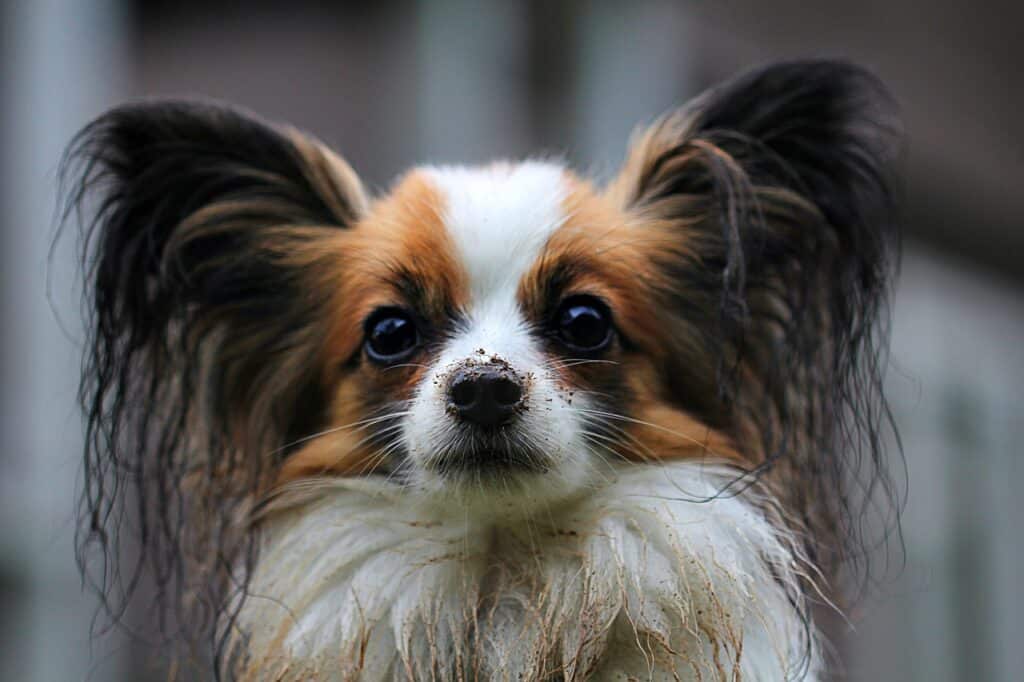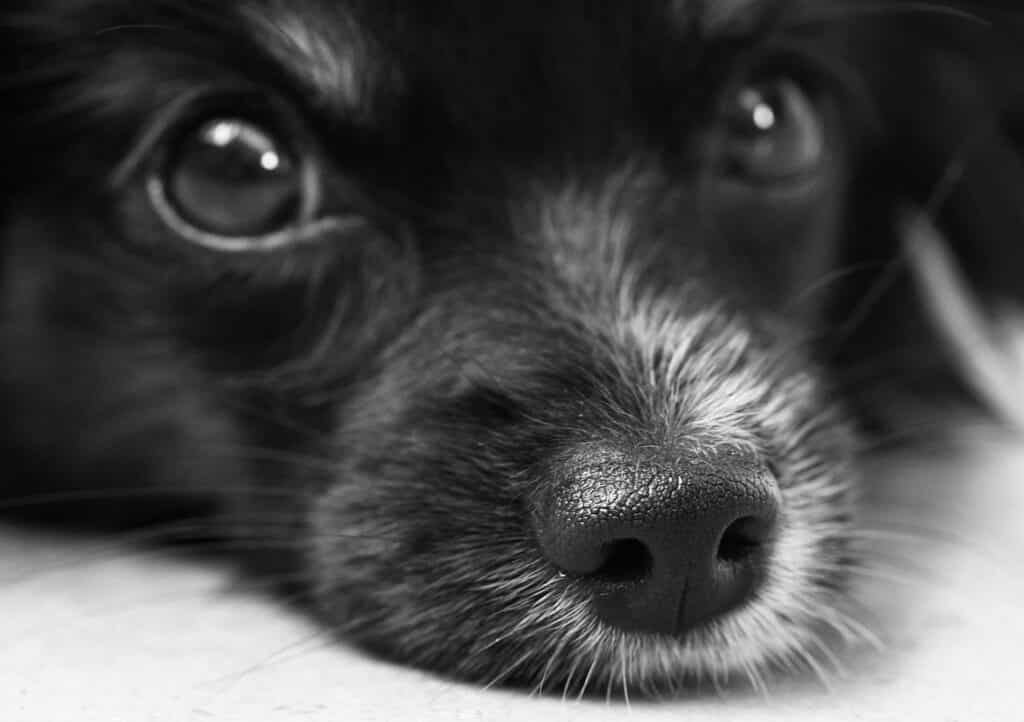Did you know papillon means butterfly in French and that the dog got its name for having hairy ears that resemble butterfly wings?
The long beautiful patchy silky hair, overall beauty, elegance and great company are some of the outstanding traits that make the papillon lovable.
What about the shedding?
Do they shed much?
Let’s find out.
Do papillons shed?
Yes, the papillons are light shedders through the year except twice during the seasonal change when they shed moderately.
Don’t let the long silky coat make you think they shed a lot; some papillon owners don’t even realize when they do, as it’s negligible.
The beauty the papillon beholds physically, and character-wise makes it a favorite for most people.
This article explores how much the papillon sheds and how to manage the shedding.

How Much Do Papillons Shed?
On a scale of five, the papillons get a two.
They are light shedders.
It’s not something that would make you dismiss the breed.
The papillon will drop some hairs through the year, but it’s nothing on the extreme.
With a proper diet and good grooming, the papillon hardly sheds.
Only during the fall and the spring will you notice some hair falling around, but even then, it’s nothing worrisome.
The papillon is a single-coated dog, making it shed less than the double-coated counterparts who shed more from the undercoat.
Its, however, worth noting that during the spring, the level of shedding may vary from one papillon to the next.
This is influenced by the personal care given to the dog.
Overall the papillons will molt evenly through the year.

What Determines How Much the Papillons Shed?
Several aspects influence how much the pap will shed.
- Diet
There is nothing like one size fits all diet that prevents shedding.
As a pet owner, you should aim to feed the papillon quality, well-balanced meals that ensure it remains healthy.
Poorly feeding the papillon will leave them stressed and malnourished, which will trigger more shedding.
- Grooming
You need to brush the papillon regularly to prevent excessive shedding.
Use the right tools while at it so you don’t harm the pooch.
Observe regular dog grooming best practices to control the shedding and prevent the pap from self-grooming, as this would translate to hairs lying around your house.
- Parasites
Observe a high level of hygiene on your pap’s kennel.
Keep the parasites at bay, especially the fleas and lice.
Failure to eliminate the parasites means the papillon will constantly feel itchy; consequently, hairs will fall off all over your fixtures.
- Skin Infections
Regularly get your papillon to the vet for a routine check-up; that way, you can avert any impending skin disease.
Overall, health helps keep the shedding at a minimum for the paps, given that disease-oriented stress can easily trigger excessive shedding.
- Allergic Reaction
If your papillon is susceptible to allergic reactions, it could trigger excessive shedding.
Talk to the vet about how to tackle the triggers that lead to an attack.
With that, you will be able to steer clear of anything that could affect the dog and consequently keep the shedding at a minimum.
How to Groom the Papillon to Control Shedding
Proper grooming gives you a headstart in tackling excessive shedding.
The papillon is a clean dog as the silky coat helps repel dirt.
That means you can do with occasional baths.
You must brush the pap once or twice a week to ensure you remove dead hairs on time lest you encounter them strewn all over your furniture.
You should be good to go if you get the brushing part right.
Use the right tools for the task.
Given that the pap has long silky hair, a metal comb and a slicker brush will do a perfect job.
Get the pap to cooperate on a designated space in your house and brush off the dead hairs.
Be keen to brush in the direction of the hair, so you don’t harm the dog.
That should prevent the hair from matting and tangling.
On bathing, if you choose to do it instead of having a professional dog groomer handle it, ensure you have the right tools and do it properly.
Get the right dog shampoo as the wrong one or human shampoo will make the dog’s skin dry, triggering more shedding.
It also alters the distribution of healthy skin oils, leading to excessive shedding.
The papillons will shed most during a bath, and afterward, it’s therefore important that you brush it off thoroughly after a bath to prevent excessive shedding.
At What Age Do Papillons Begin Shedding?
Papillons have their baby coat at birth, which they keep till they are around seven to eight months.
During this period, as they transition, you will notice increased shedding as they lose the baby coat.
Around 15 months, the paps will shed the coat once more as they graduate to adulthood.
The coat they develop during this time is the one they retain throughout their lifetime.
As they age, you will observe heightened shedding in old age like any other dog.
Frequently Asked Questions
How often does the papillon shed?
The papillon will shed mildly throughout the year.
The shedding rate increases during special occasions like transitioning from a puppy to an adult as they lose the baby coat.
They also shed moderately during the spring and fall in preparation for the oncoming weather patterns.
How can I control excessive shedding in a papillon?
Ensure the diet is right in terms of quality.
Always have balanced meals for your dog.
Brush the papillon regularly to remove dead hairs and trigger the growth of new ones.
Keep the papillon’s environment clean to ward off parasites, and always get the papillon regularly checked by the vet for skin and general infections that could aggravate shedding.
Conclusion
The papillon is a lovely pet to own.
It’s beautiful inside out.
Not forgetting, it’s quite athletic, making it a favorite exercise partner.
If you want to enjoy a papillon’s best side, give it the attention needed, feed properly and groom it.
Make your neighbors envious.
- What Dog Breeds Have Pink Skin? - March 24, 2023
- What Are the Most Inspiring Dog Breeding Quotes? - March 20, 2023
- Can Pheromone Spray Help Improve Dog Breeding Results? - March 19, 2023








